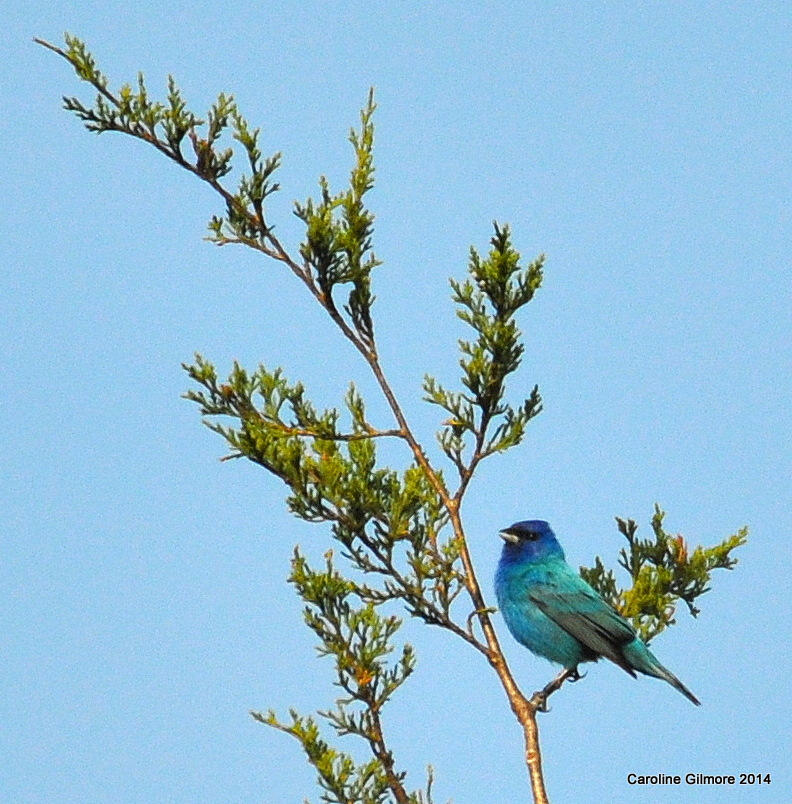Audubon North Carolina has 10 amazing chapters across the state who help put a local focus on bird preservation and conservation issues. In this special blog series, we’ll focus on a chapter each month to learn more about their history, what they are working on, and to increase the statewide understanding of special ecosystems and habitats. Each month will include a series of posts about each chapter including a post from our biologists that will share a unique research project that is happening in the chapter’s geographic footprint.
This month, we get to know New Hope Audubon. Please welcome guest-blogger Tom Driscoll.
There are many great bird watching areas in North Carolina’s piedmont region, but few are better than the Bynum Bridge area in Chatham County. Located in the small town of Bynum, the river bottom and riparian area provides several places to bird watch in the including the footbridge, the old mill area and the state park.
Once a bridge for cars over the Haw River, the walkway over the river affords eye-level views of birds high in the trees. Where Bynum Road dead-ends at the walkway, this is a great place to look for migrants as they pass through.

What To See
Birds like Spotted and Solitary Sandpipers are regularly seen in April and May as they head north, and August and September on their journey south. Many warblers and other passerines, such as Blackpoll Warblers and Rose-breasted Grosbeaks, can be seen in migration as well.
This is a great locale for seeing nesting warblers, especially Prothonotary Warblers. There is always a Prothonotary Warbler nesting somewhere along the woods near the bridge. Other nesting warbler species routinely seen here include Louisiana Waterthrush, Northern Parula, American Redstart and Black-and-white Warblers.
Nesting swallows, including Northern Rough-winged, Barn, and Cliff, can be seen from the bridge during the spring and summer months. Double-crested Cormorants can be found on the river. Eastern Phoebes, Summer Tanagers, Orchard Orioles, several woodpecker species and White-eyed Vireos can be seen from the bridge.
And if that’s not enough, there are always the Bald Eagles and Ospreys that patrol the river.
Where to Find A Birding Spot
The mill area is next to the parking lot and adjacent to a man-made creek that runs parallel to the river. Once a thriving textile mill, most of the buildings have been torn down and a small meadow is there now.
Many birds migrate through this area as well. I have seen Worm-eating, Magnolia, Prairie, and other warblers during migration. Along the creek, I have also seen Prothonotary Warblers and Louisiana Waterthrushes. However, this area is very good for several nesting birds, such as Indigo Buntings, Blue Grosbeaks, Eastern Kingbirds and Great Crested Flycatchers that prefer open areas. I have seen Yellow-throated Vireos in this area too.The State Park is a heavily wooded river bottomland that has a different set of birds.
During nesting season, I often hear Hooded, Yellow-throated and Black-and-
white Warblers, American Redstarts, Louisiana Waterthrushes and Northern Parulas. Sometimes, Kentucky Warblers can be seen.
During migration, one can find Northern Waterthrushes and other thrushes includeing Gray-cheeked and Swainson’s. Pileated Woodpeckers nest here and can be heard chattering high in the trees, and I have even seen Scarlet Tanagers here.
Bynum is located about 17 miles south of Chapel Hill. Take Hwy. 15-501 south and turn left on Bynum Rd.
For more information on birding in the piedmont, visit the New Hope Audubon Society website.



